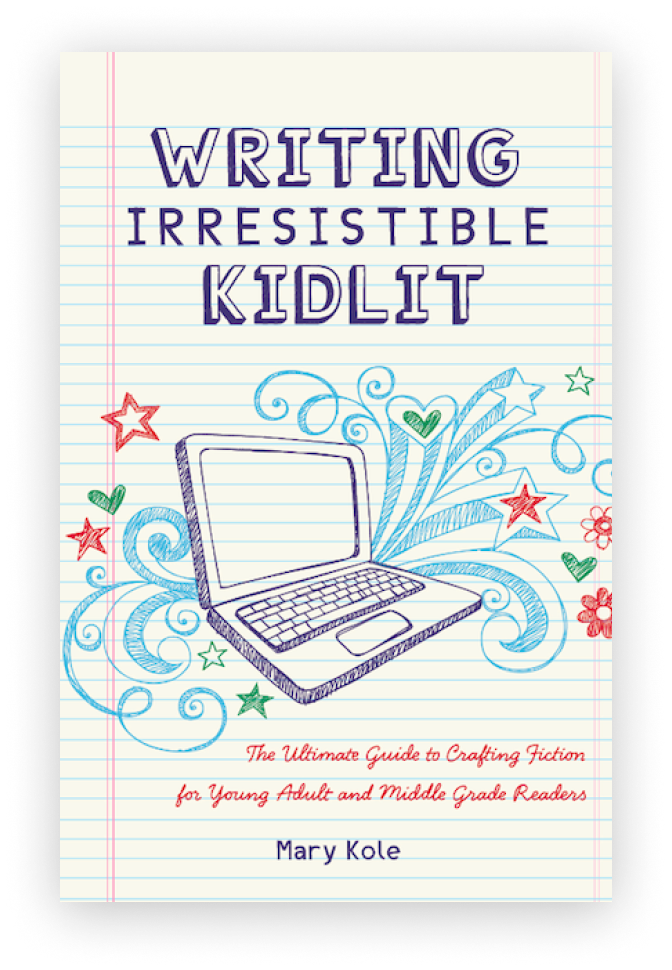Starting a Book In a Way
that Hooks Readers
By Mary Kole
Mary Kole is a former literary agent, freelance editor, writing teacher, author of Writing Irresistible Kidlit, and IP developer for major publishers, with over a decade in the publishing industry.
Starting a book can be incredibly daunting, as the first few pages of your novel need to accomplish a lot. The first few paragraphs and pages are what literary agents and publishers evaluate when deciding whether they like your story idea. The opening of your novel will set the tone for what readers can expect from your story. Starting a book is incredibly high stakes, and scares a lot of writers. Here are some tips for navigating your book’s beginning, and starting off on the right track.
Starting a Book Without Relying On Clichés
I was a literary agent for years, and I can tell you that there are things agents see over and over again in the slush pile. When starting a book, avoid clichés and overused tropes. Some are specific to certain genres and categories (a prophecy reveal of the chosen one in fantasy), and some (like waking up or discovering secret powers) appear in every type of project. While these familiar novel openings may be easy to rely on because they seem familiar, they will bore readers—and elicit an eyeroll from agents and publishers. Instead, try to come up with something unique and creative that will resonate with your target readers without relying on gimmicks. (There’s a big conversation about prologues for this reason.)
Developing Character When Starting a Book
Your story’s beginning should establish your protagonist as quickly as possible so that readers can begin developing a connection with them. Relatability and some empathy are crucial to fostering this bond. Consider using scene-setting techniques such as dialogue or sensory details to bring your characters to life on the page without info-dumping large amounts of worldbuilding or backstory. You can always introduce your character’s past (which is, indeed, relevant) later, through flashback or summary. But I’d strongly discourage getting into this nitty gritty when starting a book, as those details can bog down the story’s momentum.
Focusing on character will help create an immersive experience for readers that will draw them further into the plot as it progresses. The best thing to introduce about your character when starting a book is their objective (what they want) and motivation (why they want it). We all know what it’s like to want something, so this is instantly relatable.
Focus on Action When Starting a Book
It is also crucial to focus on action rather than exposition or narrative summary when crafting your book’s beginning. What does “action” mean? It’s not an action sequence, but it is scene, with dialogue, other characters, and story conflict, introduced right away. Don’t explain or dwell on your story’s universal theme. Focus on the present moment and get your character and plot moving. Use quick cuts between scenes to keep things chugging along and keeping pacing tight, all while deploying key pieces of information about where things are headed. When you’re starting a story, you will make the promise of the novel and even use foreshadowing to build in key hooks.
Remember, you can always go back and revise your beginning once you’re more familiar with your story so try not to worry too much about getting it perfect right away—sometimes it is easier revising something once you have written it than trying to plan out every detail beforehand, especially when it comes to a novel opening.
Starting a story is difficult but rewarding work—especially if you make sure all bases are covered by avoiding cliches, developing characters quickly, and focusing on action rather than exposition right away. That being said, if you’re really struggling with your beginning, you can always skip right over it and come back later. That’ll help you overcome any potential writer’s block and get you into the writing grove. Yes, first impressions count when it comes to literary agents and publishers, but you don’t have to nail starting a story on your first try.

Click here to purchase Writing Irresistible Kidlit, my book on fiction craft for MG and YA novels, out from Writer's Digest Books. This will show you my writing craft philosophy and give you lots of valuable advice, including tips for the novel revision process and self-editing. There are over 35 example novels cited and discussed throughout. It’s a valuable resource for any writer’s toolkit.
Click here to purchase Irresistible Query Letters, my book on query letters, including over forty examples with comprehensive notes on each one. There’s a ton of submission advice, best practices, and insider information in these pages, and you’ll really enjoy seeing what other writers are doing in the slush.
Click here to purchase Writing Interiority: Crafting Irresistible Characters, my book on interiority and character creation. Explore your protagonist’s thoughts, feelings, reactions and interpretations, expectations, and inner struggles to create a rich, immersive experience. This guide will empower you to create characters who live and breathe on the page, fostering an unbreakable bond with your audience.





